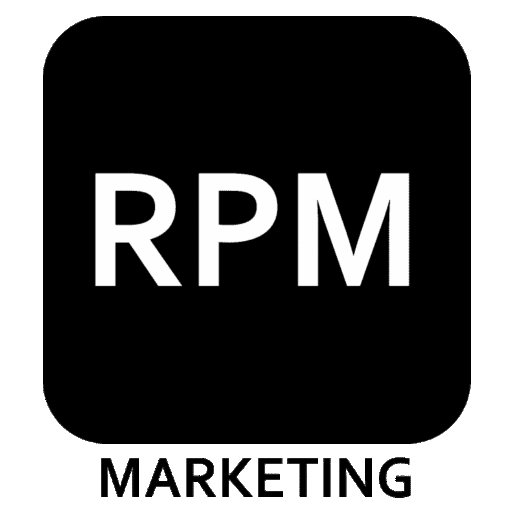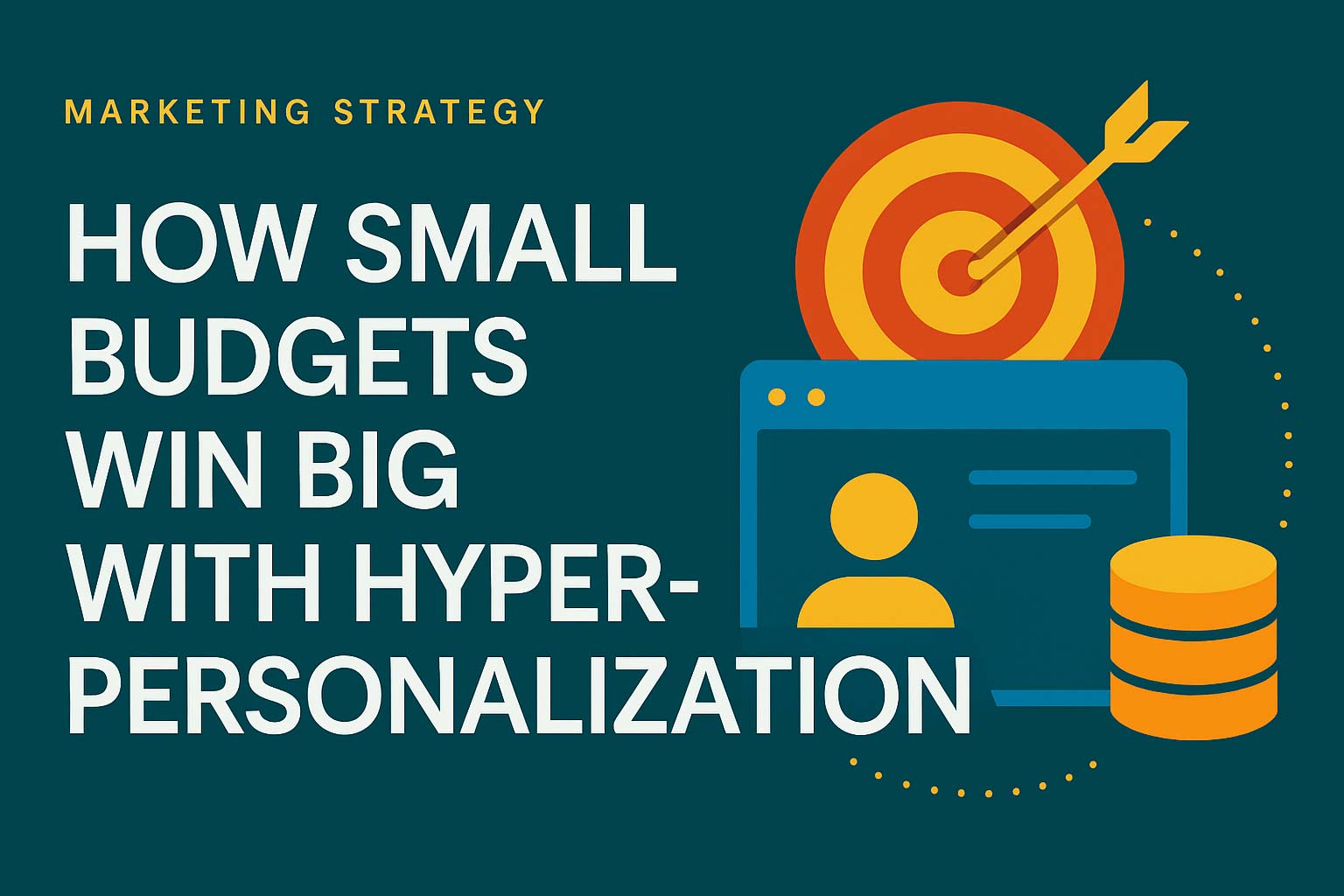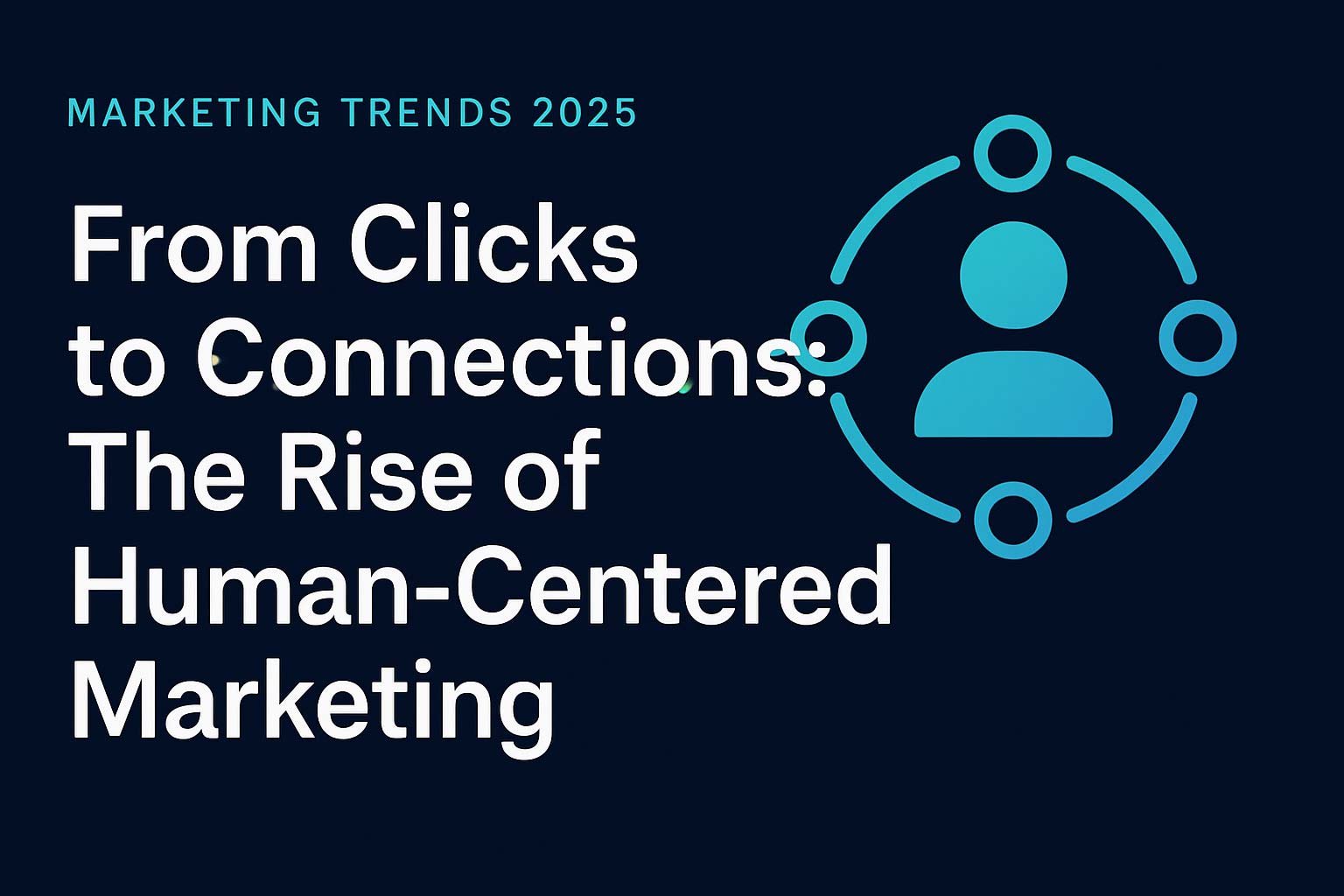In today’s competitive marketplace, small businesses and startups face an intimidating challenge: competing against corporations with seemingly unlimited marketing budgets. However, the rise of hyper-personalization has leveled the playing field in unprecedented ways. While large companies struggle with bureaucracy and broad messaging, nimble organizations with limited resources can create deeply personal, targeted experiences that drive exceptional results without breaking the bank.
The Small Business Advantage in Hyper-Personalization
Small businesses possess inherent advantages that make hyper-personalization not just possible, but natural. Unlike large corporations that must navigate complex approval processes and departmental silos, small teams can pivot quickly, implement changes immediately, and maintain direct connections with their customers. This agility becomes a superpower when combined with strategic personalization tactics.
The intimate scale of small business operations allows for genuine relationship building that larger companies often struggle to achieve. When a business owner personally knows their customers’ names, preferences, and challenges, creating personalized experiences becomes an extension of natural relationship management rather than a complex technological undertaking.
Furthermore, small businesses typically serve more focused market segments, making it easier to understand customer needs and create relevant, personalized content. This focused approach allows for deeper insights and more effective targeting than the broad-stroke strategies often employed by larger competitors.
Understanding Budget-Friendly Hyper-Personalization
Hyper-personalization doesn’t require expensive enterprise software or massive data analytics teams. At its core, it’s about creating individual experiences that make each customer feel uniquely understood and valued. This can be achieved through careful observation, smart tool selection, and creative application of limited resources.
The key is focusing on high-impact personalization opportunities that deliver maximum results with minimal investment. This means identifying the customer touchpoints that matter most and optimizing those experiences rather than trying to personalize everything at once. Strategic prioritization allows small budgets to compete effectively with much larger marketing investments.
Modern technology has democratized access to personalization tools that were once exclusive to enterprise-level organizations. Cloud-based platforms, affordable analytics tools, and automated marketing solutions now provide sophisticated capabilities at fraction of their historical cost, making advanced personalization accessible to businesses of all sizes.
Low-Cost Tools and Platforms for Maximum Impact
Email marketing platforms like Mailchimp, ConvertKit, and ActiveCampaign offer powerful segmentation and automation features at affordable price points. These tools can create sophisticated personalization workflows based on customer behavior, preferences, and engagement patterns without requiring technical expertise or large budgets.
Customer relationship management (CRM) systems such as HubSpot’s free tier, Pipedrive, or Zoho provide centralized customer data management that enables personalized interactions across all touchpoints. These platforms track customer history, preferences, and interactions, making it easy to create tailored experiences even with limited team resources.
Social media management tools like Buffer, Hootsuite, or Later enable personalized social media engagement at scale. These platforms can schedule targeted content for different audience segments and provide analytics that inform future personalization strategies.
Google Analytics and Facebook Analytics provide free insights into customer behavior patterns that inform personalization strategies. Understanding how different customer segments interact with your website and content allows for targeted improvements that enhance the personal experience.
Website personalization can be achieved through affordable tools like OptinMonster, Sumo, or even WordPress plugins that display different content based on visitor behavior, location, or referral source. These tools require minimal investment but can dramatically improve conversion rates through targeted messaging.
Data Collection Strategies for Small Businesses
Effective personalization begins with smart data collection that doesn’t overwhelm customers or violate privacy expectations. Small businesses should focus on gathering information that directly improves the customer experience while being transparent about how data will be used.
Progressive profiling allows businesses to gradually build detailed customer profiles through multiple interactions rather than overwhelming prospects with lengthy forms. Each interaction can request one or two additional pieces of information, building comprehensive profiles over time without creating friction.
Behavioral tracking through website analytics, email engagement metrics, and social media interactions provides valuable insights into customer preferences and interests. This passive data collection requires no additional effort from customers but provides rich information for personalization efforts.
Survey and feedback collection through simple tools like Typeform, Google Forms, or SurveyMonkey can gather specific personalization data directly from customers. When framed as improving their experience, customers are often willing to share preferences, challenges, and goals that inform personalization strategies.
Social listening through free tools like Google Alerts, Hootsuite Insights, or social media monitoring helps small businesses understand customer conversations, interests, and pain points. This information can inform personalized content creation and messaging strategies.
Creating Personalized Content on a Shoestring Budget
Content personalization doesn’t require unique content for every individual customer. Instead, smart businesses create modular content that can be mixed and matched to create personalized experiences for different customer segments or individual preferences.
Template-based personalization allows businesses to create content frameworks that can be quickly customized for different audiences. Email templates, blog post formats, and social media content templates can be adapted with specific details, examples, or messaging that resonates with particular customer segments.
User-generated content provides personalized social proof while reducing content creation costs. Customer testimonials, reviews, case studies, and social media mentions can be curated and presented to prospects who share similar characteristics or challenges, creating relevant and cost-effective personalization.
Dynamic content insertion through email marketing platforms and website tools can automatically customize content based on customer data. Product recommendations, location-specific information, and behavior-triggered content can be automated once set up, providing ongoing personalization without continuous manual effort.
Repurposing and segmenting existing content allows small businesses to maximize their content investment while providing personalized experiences. A single piece of content can be adapted for different audience segments, channels, or customer journey stages, multiplying its personalization value.
Automation Strategies That Scale Personal Touch
Marketing automation enables small businesses to deliver personalized experiences at scale without proportional increases in time investment. Well-designed automation workflows can nurture relationships, provide relevant information, and guide customers through personalized journeys based on their specific behaviors and interests.
Email automation sequences can be triggered by specific customer actions, interests, or characteristics. Welcome sequences, abandoned cart recovery, post-purchase follow-ups, and re-engagement campaigns can all be personalized based on customer data while running automatically in the background.
Behavioral triggers can automatically deliver personalized content or offers based on website activity, email engagement, or purchase history. These triggers ensure that customers receive relevant information at optimal times without requiring manual monitoring or intervention.
Social media automation tools can schedule and deliver personalized content to different audience segments while maintaining the appearance of real-time, personal interaction. Automated responses and chatbots can provide immediate, personalized customer service that enhances the experience while reducing labor costs.
Customer journey automation can guide prospects and customers through personalized experiences based on their specific characteristics, needs, and behaviors. These automated journeys can provide education, support, and offers that feel individually tailored while operating efficiently in the background.
Leveraging Customer Data for Smart Segmentation
Effective segmentation transforms broad customer databases into focused groups that enable targeted personalization. Small businesses should focus on segmentation criteria that directly impact purchasing decisions and communication preferences rather than demographic data that may not correlate with behavior.
Behavioral segmentation based on website activity, email engagement, and purchase history often provides the most actionable insights for personalization. Customers who browse specific product categories, engage with particular content types, or exhibit certain buying patterns can receive targeted experiences that align with their demonstrated interests.
Lifecycle stage segmentation ensures that customers receive appropriate messaging and offers based on their relationship with the business. New prospects, active customers, and lapsed customers all require different personalized approaches to maximize engagement and conversion potential.
Value-based segmentation identifies high-value customers who deserve additional personalization attention and resources. These customers can receive premium personalized experiences that reinforce their importance while potentially inspiring similar behavior from other segments.
Geographic and temporal segmentation can provide relevant personalization for location-specific offers, time-sensitive communications, and regional preferences. Small businesses can leverage this segmentation to create locally relevant experiences that larger competitors might overlook.
Measuring ROI of Personalization Efforts
Small businesses must carefully track the return on investment of their personalization efforts to ensure resources are being allocated effectively. This measurement should focus on metrics that directly correlate with business growth rather than vanity metrics that don’t impact the bottom line.
Conversion rate improvements provide clear evidence of personalization effectiveness. Tracking conversion rates for personalized versus generic experiences across email campaigns, website pages, and marketing funnels demonstrates the tangible impact of personalization investments.
Customer lifetime value increases often result from effective personalization that deepens relationships and encourages repeat business. Comparing the lifetime value of customers who receive personalized experiences versus those who don’t can justify continued investment in personalization strategies.
Engagement metrics such as email open rates, click-through rates, time on site, and social media interactions indicate how well personalized content resonates with audiences. These metrics help optimize personalization strategies and identify the most effective approaches for different customer segments.
Cost per acquisition reductions often result from more targeted, personalized marketing efforts. When personalization improves conversion rates and customer targeting, the cost of acquiring new customers typically decreases, improving overall marketing efficiency and ROI.
Common Mistakes to Avoid with Limited Resources
Resource-constrained businesses often make personalization mistakes that waste precious time and money. Understanding these common pitfalls helps small businesses avoid costly errors and focus their efforts on high-impact personalization strategies.
Over-personalization can feel invasive or creepy to customers, particularly when businesses lack sufficient data to personalize effectively. It’s better to under-personalize authentically than to over-personalize based on assumptions or incomplete information.
Technology-first approaches often lead to expensive tool investments that don’t align with actual customer needs or business capabilities. Small businesses should start with customer understanding and manual processes before investing in automation and advanced personalization tools.
Neglecting data privacy and customer consent can damage relationships and expose businesses to regulatory risks. Even small businesses must prioritize transparent data practices and respect customer privacy preferences in their personalization efforts.
Inconsistent personalization across channels creates confused customer experiences that undermine personalization benefits. Small businesses should ensure that personalized messaging and experiences are coordinated across all customer touchpoints.
Focusing on perfection rather than progress prevents many small businesses from implementing effective personalization strategies. It’s better to start with simple, imperfect personalization that can be improved over time than to delay implementation while pursuing ideal solutions.
Case Studies: Small Businesses Winning with Personalization
Local restaurants have successfully used personalization to compete with chains by remembering customer preferences, dietary restrictions, and favorite orders. Simple CRM systems and staff training enable these businesses to provide highly personalized service that creates strong customer loyalty and word-of-mouth marketing.
E-commerce boutiques leverage personalized product recommendations based on browsing history and purchase patterns to increase average order values and customer satisfaction. Affordable tools like recommendation engines and email marketing platforms enable sophisticated personalization that rivals much larger retailers.
Service-based businesses use personalized content marketing to demonstrate expertise and build relationships with potential clients. By creating targeted content that addresses specific industry challenges or client types, these businesses attract qualified leads and establish themselves as trusted advisors.
Professional consultants and coaches use personalized email sequences and content to nurture prospects through extended sales cycles. By providing relevant insights and resources based on prospect characteristics and interests, they maintain engagement and build authority without requiring constant manual attention.
Building Long-Term Customer Relationships Through Personalization
Sustainable personalization focuses on building genuine relationships rather than manipulating customer behavior for short-term gains. Small businesses are uniquely positioned to create authentic personal connections that large corporations struggle to replicate at scale.
Consistency in personalized interactions builds trust and reliability that customers value highly. When personalization feels genuine and helpful rather than sales-focused, customers develop emotional connections that drive long-term loyalty and advocacy.
Evolution and adaptation of personalization strategies based on customer feedback and changing needs demonstrates genuine care for customer success. Small businesses can pivot quickly to address emerging customer needs, maintaining relevance and value in their personalized approaches.
Community building through personalized interactions creates networks of customers who support each other and the business. Small businesses can facilitate these communities while providing personalized experiences that strengthen relationships with individual customers and the broader community.
Future-Proofing Your Personalization Strategy
Successful personalization strategies must be sustainable and scalable as businesses grow. Small businesses should choose approaches and tools that can evolve with their needs rather than requiring complete overhauls as they expand.
Privacy-first personalization strategies prepare businesses for evolving data protection regulations and changing customer expectations. Building personalization approaches that respect privacy and provide clear value exchange will become increasingly important as awareness of data issues grows.
Technology integration planning ensures that personalization tools and approaches can work together effectively as businesses add new capabilities. Starting with compatible, scalable solutions prevents costly migrations and integration challenges later.
Skills development within the team ensures that personalization capabilities grow with the business. Investing in team training and education creates sustainable competitive advantages that don’t depend on external vendors or consultants.
Scaling Success: When to Invest More in Personalization
As small businesses grow and personalization efforts prove successful, strategic reinvestment in more sophisticated tools and approaches can accelerate growth and competitive advantage. Understanding when and how to scale personalization efforts helps businesses maximize their investment returns.
Revenue milestones provide natural opportunities to invest in more advanced personalization capabilities. As customer bases grow and revenue increases, businesses can afford more sophisticated tools and dedicated personalization resources.
Customer feedback and demand for enhanced personalized experiences can indicate readiness for investment in advanced capabilities. When customers actively request or appreciate personalized features, additional investment is likely to generate positive returns.
Competitive pressure may require enhanced personalization capabilities to maintain market position. As competitors adopt more sophisticated personalization strategies, businesses may need to invest in matching or exceeding those capabilities to retain customer loyalty.
Conclusion: Small Budgets, Big Results Through Smart Personalization
The democratization of personalization technology has created unprecedented opportunities for small businesses to compete effectively with much larger competitors. By focusing on high-impact strategies, leveraging affordable tools, and maintaining authentic relationships with customers, resource-conscious marketers can achieve remarkable results that far exceed their investment.
The key to success lies not in having the biggest budget, but in understanding customers deeply and applying personalization strategically where it matters most. Small businesses that master these principles will continue to win big, regardless of budget constraints, by creating experiences that larger competitors simply cannot match.
The future belongs to businesses that can combine technological capability with human understanding to create genuinely personalized experiences. Small businesses, with their inherent advantages in agility, focus, and authentic relationship building, are perfectly positioned to lead this personalization revolution and achieve disproportionate success through smart, strategic application of limited resources.



